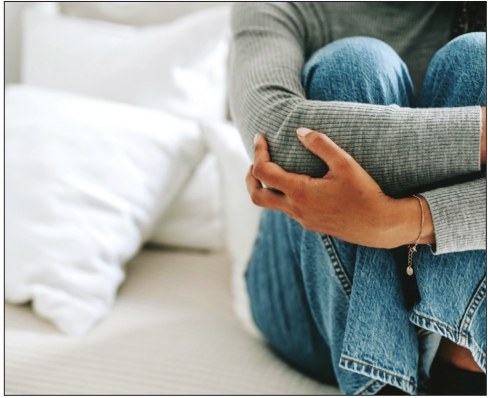
Most people who have SAD experience winter-pattern SAD, with symptoms beginning in the fall, continuing through the winter and easing up by the spring.The changing of the seasons affects about 10 million people in America so severely that it impacts their ability to function. They experience depression, a lack of motivation, a desire to sleep longer and an increased appetite. This is a type of depression known as seasonal affective disorder.
Seasonal affective disorder, known by its apt abbreviation, SAD, is a “recurrent major depressive disorder,” according to the Diagnostic and Statistical
Manual of Mental Disorders, 5th Edition, or “DSM-5”. The DSM-5 is the American Psychiatric Association’s medical reference book for mental health professionals.
Most people who have SAD experience winter-pattern SAD, with symptoms beginning in the fall, continuing through the winter and easing up by the spring. A smaller subset of individuals have summer-on-set SAD with symptoms beginning in the early spring or summer that alleviate by the fall.
“It is considered a major depressive disorder with seasonal pattern, but we use the term ‘seasonal affective disorder,’” Dr. Jim Raines from Kaiser Permanente said on KCRA News.
“It can be very intense and can have all the other things that you get in depression, except that it’s very much pattern-oriented.”
Some symptoms of winter-SAD include oversleeping, feelings of sadness and hopelessness, craving sweet or starchy comfort foods, weight gain, fatigue, difficulty concentrating, irritability, avoiding social situations and having thoughts of suicide.
Some symptoms of summer-SAD are insomnia, agitation, poor appetite, weight loss and anxiety.
SAD is typically diagnosed when there is a regularly occurring major depressive episode that corresponds to a certain time of year. Major depressive episodes associated with SAD should happen at least twice in the past two years around the same time. Only a mental health clinician can give an official diagnosis.
Causes
It’s unknown what causes SAD. According to the National Institute of Mental Health (NIMH), most research is focused on winter-SAD because it is more prevalent. There is a link between individuals with winter-SAD and reduced levels of serotonin, which is a neurotransmitter that helps regulate moods.
Vitamin D deficiency may also contribute to SAD. It’s believed that Vitamin D promotes serotonin activity.
Another possible cause of SAD is having too much melatonin. Melatonin is a hormone that is instrumental in the sleep cycle.
Having too much melatonin can lead to hypersomnia, or oversleeping.
Changes in serotonin and melatonin levels disrupt biological rhythms, making it harder to adjust to seasonal changes. The difficulty in adjusting to seasonal shifts can lead to changes in mood, behavior and sleep.
SAD is more prevalent in women than men, and the typical age of onset is in young adulthood. It’s more pervasive the farther away someone lives from the equator. A Bostonian is more likely to suffer from SAD than someone in Arizona.
Treatment
The Mayo Clinic suggests cognitive behavioral therapy to help find ways to manage symptoms. Medications like Wellbutrin, an antidepressant, may also be prescribed in treatment plans to help prevent symptoms.
Treatment plans take several weeks to reach full effectiveness. For Dosha Beard, 69, waiting several weeks was just too long. Two years ago, she and her family decided to spend winters in her husband’s hometown of Rome, Georgia.
“Moving down South has definitely helped with my seasonal affective disorder,” Beard told the Banner by phone. “I think I would be pretty sad right now if it weren’t for the full knowledge that I’m leaving in November.”
She said her symptoms begin around early September, and recalled that she started feeling “winter blues” in her early 30s. While she did confirm having low levels of Vitamin D, the biggest culprit for Beard is daylight savings time.
Beard said, “As soon as daylight savings hits, I’m all messed up. Yes, we get an extra hour of sleep, but you wake up, it’s dark. If you work in an office, that’s when it’s light out. Then you come out and it’s dark. It’s just dark. Dark. Dark.”
SAD is treatable, but it’s important to consult a mental health clinician for proper diagnosis and treatment.
If you are or someone you know is experiencing suicidal thoughts, text or call 988 to contact the National Suicide and Crisis Lifeline.